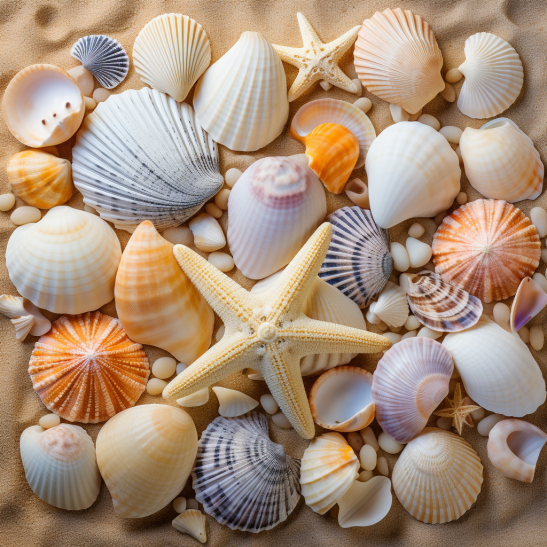Seashell art has a rich cultural history and is integrated into the traditions of various cultures worldwide. Here’s a glimpse of how different cultures incorporate seashell art into their heritage:
- Hawaiian Hula Accessories: In Hawaiian culture, seashells are used to create intricate leis and adornments worn during hula dances. These shells add a distinct tropical charm to the traditional dance.
- Native American Crafts: Indigenous tribes in North America have a long history of using seashells in their crafts. From jewelry to ceremonial objects, seashell art plays a significant role in their cultural expressions.
- Pacific Islander Canoe Decoration: Many Pacific Islander communities use seashells to decorate their traditional outrigger canoes. The shells are intricately arranged to create stunning, ocean-inspired designs.
- African Rituals: In some African cultures, seashells are used in spiritual and ritual practices. They are believed to hold protective and healing qualities, often incorporated into divination tools and jewelry.
- Mexican Folk Art: Mexican folk art frequently features seashells, especially in regions with coastal traditions. Seashells are incorporated into vibrant mosaics, sculptures, and religious artifacts.
- Asian Shell Decorations: Asian cultures, particularly in countries like the Philippines and Thailand, use seashells to craft decorative items like lamps, mirrors, and jewelry, showcasing the beauty of the ocean.
- Polynesian Shell Money: In parts of Polynesia, seashells, particularly cowrie shells, were historically used as a form of currency and as adornments for clothing and jewelry.
- Greek and Roman Artifacts: Ancient Greek and Roman civilizations used seashells to create intricate cameos and mosaics, often depicting mythological scenes.
- Indonesian Batik Designs: Seashell motifs are common in Indonesian batik designs, a traditional form of textile art. These patterns are celebrated for their cultural significance.
- Caribbean Carnival Costumes: During Caribbean carnivals, costumes are often adorned with seashells, pearls, and other ocean-inspired elements, adding vibrancy and cultural flair to the festivities.
- Australian Indigenous Art: Aboriginal art in Australia often incorporates seashell motifs, reflecting the deep connection to the land and sea in Indigenous culture.
- European Shellwork Crafts: In Europe, particularly during the Victorian era, seashell art and crafts were popular hobbies. Intricate shellwork creations included jewelry boxes, frames, and decorative items.
- Japanese Shell Artifacts: In Japan, seashells have been used in crafting traditional accessories like kanzashi hairpins and inlaid lacquerware, displaying a delicate and artistic approach.
- Pacific Northwest Totem Poles: Some indigenous tribes in the Pacific Northwest incorporate seashell designs into their totem poles, symbolizing ancestral stories and connections to the ocean.
- Oceanic Tapa Cloth Decorations: In parts of Oceania, tapa cloth is decorated with seashell patterns, creating stunning and meaningful designs.
These examples illustrate the diverse ways in which seashell art is woven into the cultural tapestry of societies around the world. From spiritual rituals to everyday adornments, seashell art remains a cherished and culturally significant form of expression.



